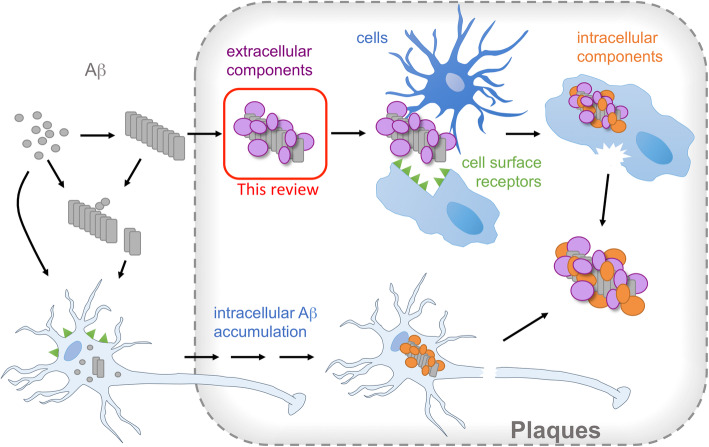Fig. 5.
Illustration of how extracellular and intracellular components may end up in senile plaques. Most of the produced Aβ are secreted and can under certain circumstances aggregate in the extracellular environment. The amyloid will bind to extracellular components to form multicomponent aggregates. Amyloid deposits can also trigger cellular response through cell surface receptors leading to phagocytosis and co-accumulation of intracellular components. In another route, the extracellular amyloid can promote the formation of oligomeric Aβ. These oligomers, as well as Aβ monomers, can be internalized by cells and accumulate in the intracellular environment. Too high intracellular load of aggregated proteins may eventually lead to cell death and release of the aggregated material

